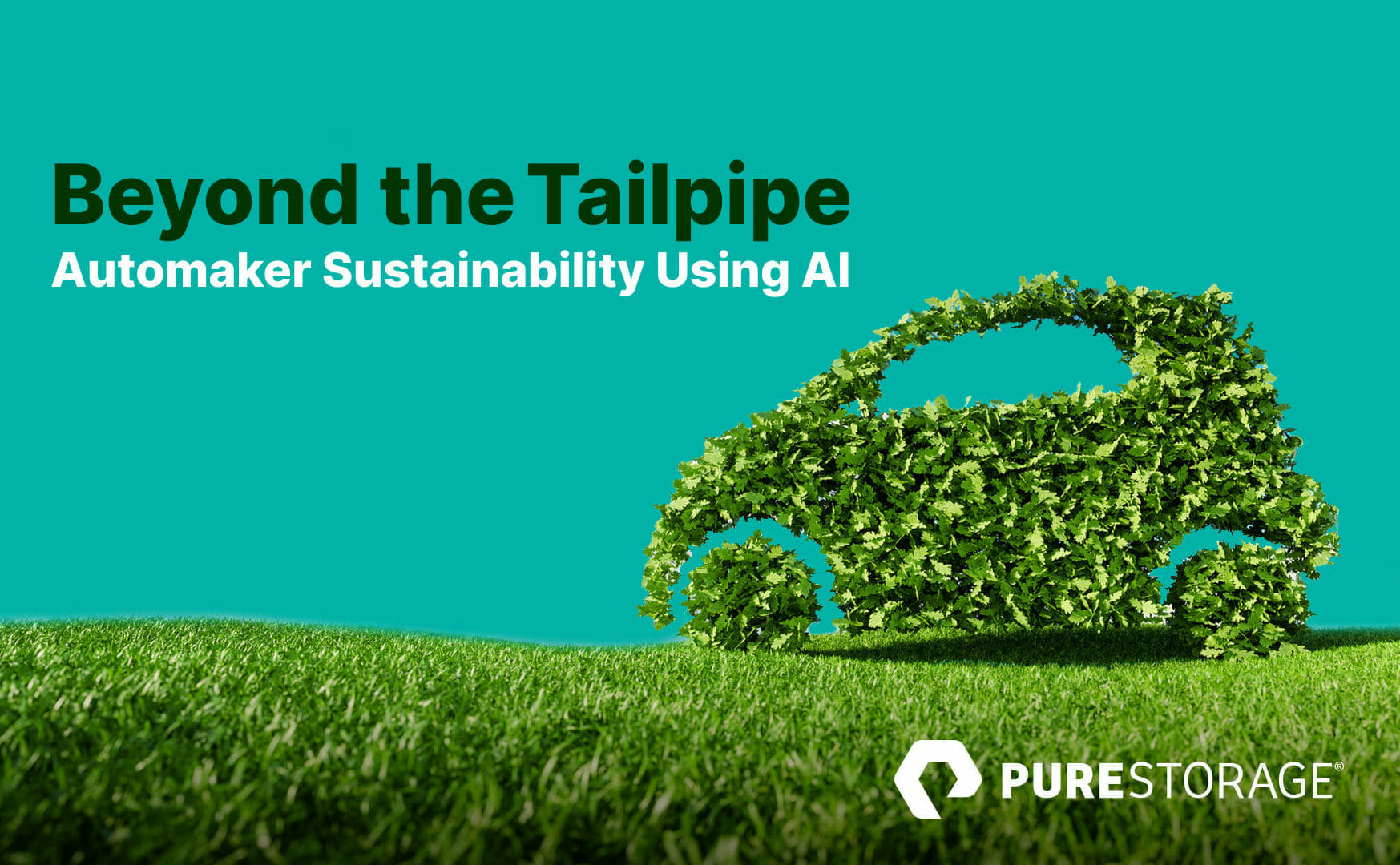All major automakers have committed to carbon reduction goals. A major focus is reducing emissions from cars via increased electrification of vehicles. But sustainability efforts need to look “beyond the tailpipe,” as McKinsey says, to include the entire car manufacturing process.
This is where artificial intelligence (AI) can play a key role. Digital manufacturing transformation that leverages AI is impacting multiple industries. It has many potential applications in the automotive industry.


Greater Production Efficiency
Manufacturing electric vehicles (EVs) can create twice as many emissions compared to manufacturing internal combustion engine (ICE) vehicles. But there’s opportunity for reducing emissions all along the production line. Using AI to continually monitor production processes can provide insights needed to gain additional efficiencies. For instance, the factory power grid and energy usage can be monitored in real time to control and adjust consumption.
Component Design
The total environmental impact of vehicle production is the sum of its parts. By applying AI to component design, gains can be made one part at a time, whether in the manufacturing of the component or its power efficiency. Newer materials may provide efficiencies by lowering vehicle weight or reducing energy input costs.
New Thinking with Electric Vehicles
Because EV technology is so much newer than century-old ICE technology, it offers far more opportunity for new design and innovation. Outside-the-box thinking, powered by AI, may see unexpected breakthroughs in the years ahead. Automakers are no longer limited by well-worn technologies that can only be incrementally improved. The sky’s the limit with EVs.
Dual-mission Infrastructure Strategies
AI projects have traditionally been siloed in terms of IT infrastructure, especially when it comes to storage. But ultra-powerful file and object storage platforms such as Pure Storage® FlashBlade//S™ can provide infrastructure for multiple AI projects at the same time. And the insights from one project can influence others. As McKinsey notes, “These synergies allowed the companies to take advantage of their one-time investment in a technology stack to pursue multiple use cases instead of just one or two, resulting in even greater impact that can build over time.”
The Right Platform for Automotive AI
To help automakers realize the many promises of automotive AI, Pure and NVIDIA have created AIRI//S™, a complete AI technology stack. With AIRI//S, data scientists can be productive without having to worry about infrastructure. AIRI//S is designed from software to hardware to keep GPUs busy for AI workloads at any scale.
Because of its exceptional scalability, AIRI//S is well suited to capitalize on the advantages gained by dual-mission AI efforts. McKinsey reports that a European automotive factory implemented several AI projects at the same time. “Taken together, those changes helped the plant reduce warranty incidents by 50%, increase its flexibility to deal with its many vehicle configurations, and reduce manufacturing costs by more than 10%.” AI also helped in implementing “digital solutions that improve sustainability by driving energy consumption.”
Reducing Data Center Power Consumption
As AI projects grow in scope, one of the biggest challenges is power consumption. First, there’s the environmental impact. But there are also data center power limits. Compute units continually get more powerful, and scaling AI solutions can quickly lead to challenges such as not being able to deliver sufficient power to a rack.
One way to help is to switch to more power-efficient storage, and the clear choice is Pure.
As detailed in our ESG report, Pure reduces energy consumption by as much as 80% compared to competitive all-flash systems. That’s a remarkable number. If you’re still operating spinning disk or hybrid arrays, then the savings are even more dramatic. And Pure arrays are extremely dense, meaning you can also save on rack space.
Significantly reducing storage power consumption frees up capacity for more compute nodes while driving down your energy utilization. You can find more information in the ESG report about how Pure’s unique technology advantages result in lower power consumption, less electronic waste, and other sustainability benefits.
Get the details on Pure’s power-reducing technology in our ESG report.
Watch an on-demand webinar about AI in the automotive industry.
Reduce Energy Consumption
Learn how Pure is continuing with its commitment to environmental, social, and governance.








